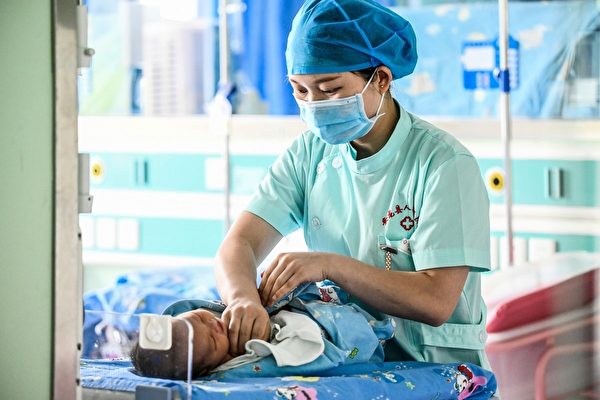On the eve of International Nurses Day on May 12th, Chinese media reported that the number of registered nurses in Mainland China is only 5.63 million, with a staggering shortage of 4 million. Factors such as high intensity of work, low income, poor treatment, and low professional recognition have hindered the expansion of the nursing workforce.
According to a report by the “Legal Daily” on May 11th, there is a huge gap in the number of nurses in Mainland China. Issues such as high work intensity, low income, poor treatment, and low professional recognition are plaguing the nursing workforce.
In May 2021, the State Council of the Chinese Communist Party issued a document stating the goal of gradually achieving a nurse-to-physician ratio of about 1:2 in public hospitals. However, data from the National Bureau of Statistics of the Chinese Communist Party showed that the nurse-to-physician ratio is less than 1:1.2. The National Economic and Social Development Statistics Bulletin for 2023 revealed that there are a total of 12.47 million health technical personnel nationwide, including practicing physicians and assistant physicians at 4.78 million and registered nurses at 5.63 million.
The report cited Dr. Yao Huaifang, Chief Physician at the First Affiliated Hospital of Anhui University of Traditional Chinese Medicine, who calculated based on this data that the national nursing shortage is close to 4 million.
Li Mu (pseudonym), a nurse in the anesthesia department of a top-tier hospital in Beijing, mentioned that surgeries are performed continuously day and night due to the shortage of staff. She stated that the department should have around 40 nurses but currently has only over 20. “We are severely short-staffed in our department,” she said.
Multiple nurses mentioned in the report that the number of nurses in local hospitals is generally “insufficient.”
A woman named Chen working at another top-tier hospital in Beijing mentioned that despite having over 20 beds in the ward, the number of nurses at most times is only around 10. Yang, working at a hospital in Tianjin, works 10 to 11 night shifts per month with only two nurses on duty, responsible for almost 40 hospitalized patients. Her department has over 50 beds.
Yang Yi (pseudonym), head nurse of the Nursing Department at a top-tier hospital in Guangdong Province, described the situation as “busy, low treatment, and high turnover”. “Although day shifts are supposed to end around 4 pm, it often extends to six or seven in the evening. Night shifts, which should end at 8 am the next day, frequently stretch till noon,” she said.
Han, a nurse who has been working for over ten years in an ICU at a top-tier hospital in Beijing, expressed the situation where there are many patients and few nurses. “The number of nurses has not increased for so many years. On the contrary, many nurses have been transferred or even resigned due to heavy workloads,” she stated.
Dr. Yao Huaifang pointed out that according to the requirements of the National Health Commission, the nurse-to-bed ratio in hospitals should not be less than 1:0.4, which means for 40 beds, there should be at least 16 nurses. However, in many hospitals, the nurse allocation is significantly lower than this.
Dr. Yao believes that nurses are under significant pressure, often working night shifts, having the most contact with patients, and facing the highest risk of infection during epidemics. However, the relatively low salary and lack of respect in the workplace have deterred many nursing graduates from entering the profession. Furthermore, the increasing nurse turnover has exacerbated the nurse shortage. Moreover, the insufficient nurse establishment in almost all hospitals has led to a failure to strictly establish nurse staffing levels.
This situation has put immense pressure on healthcare workers, as highlighted by a Beijing doctor who described the challenges faced during the pandemic.

